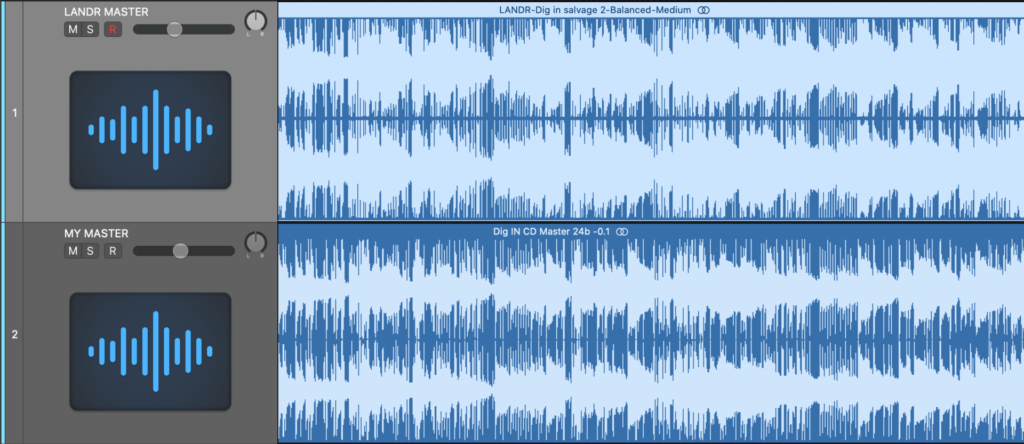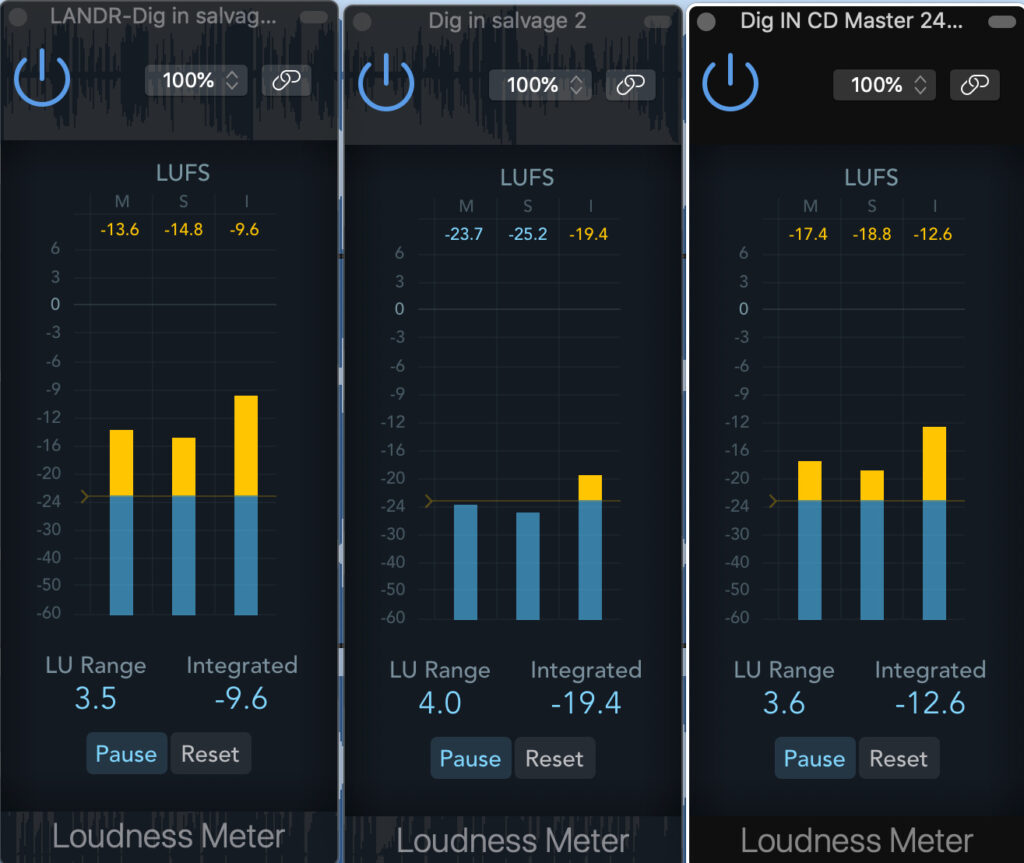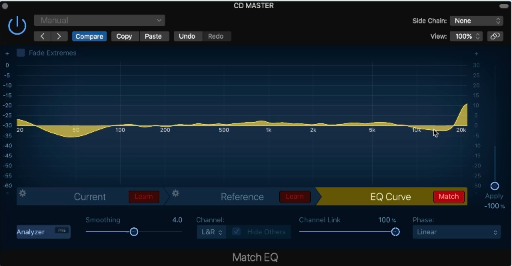LANDR Automated Mastering vs Human Mastering
5th May 2021
A Comparison And Review Between Automated Mastering and Human Mastering
Is Landr any good? Is Landr Legit? I thought it would be interesting to compare a Landr automated master to my own master.
These automated mastering services like Landr, and eMastered have been around for quite a few years now. They differ from traditional studio or online mastering services in one key way.
The mastering is carried out by a computer.
An algorithm has been carefully designed by some really cleaver people to ‘listen’ to the track, decide what’s best and to carry out the mastering. It’s an online service which you upload your track to, and receive the master to download within minutes.
“How does this differ from a plugin on in your DAW with some automatic settings then?” you might say. The only difference that I can see is that you have to upload and download the files. This seems to emulate the process of online mastering but without a professional at the other end of the broadband transfer.
Confirmation Bias: I Like Music Production
Cards on the table, I’m really skeptical about automated mastering. Am I being a Luddite? Well, I’m enthusiastic about some advances in technology, just not all. I tend to think that if automated mastering was really good then everyone would be using it, and saving lots of money on the way.
So, everyone is not using Landr…..time to find out why.
The Automated Mastering Comparison
So, the tune is my own track that I mastered months ago before this test was a twinkle in my eye. I paid £8 for the ‘standard’ (cheapest) service on Landr and got them side by side in Logic.

Before listening I spent a while balancing the levels so I would be listening at the same perceived level. This is important as louder sounds almost always sound better to the human ear. I did this by running a loudness meter over each track:

As you can see my master was 3dB quieter but both had the same dynamic range. By turning the Landr master down by 3dB, both tracks sounded the same volume. Note – the middle pane is the pre-mastered track for reference.
First Reactions
I listened to my own master first, just a 30 second clip to acclimatise my ears to the already familiar sound. Then I played the Landr version. I must admit my first reaction after 1 second was “oh no it’s better than my master!” the bass/low mids have been reformed and presented as a large lump in the middle of the soundfield which gleefully slams with the kickdrum. Clearly, I’m easily impressed!
This ‘shock and awe’ tactic reminds me of festival sound where there’s a huge array of sub cabs in the PA. All too often they are relied upon to provide ‘false excitement’ to the audience – rendering a 22” kick drum to chest-crushing levels, dominating the sound and dwarfing the more subtle elements of the music.
As a result of this ‘mono lump’ here seems to be some thinning of the low mids in the wide sounds, I’d estimate that from 160Hz any information in the sides starts getting brought to the middle.
Cut ‘n’ Boost: Counting The Cost
After another 10 seconds or so I noticed how the extra overall level had come at a cost – space around the sounds had been brought to a minimum or removed altogether. This was particularly noticeable with the kick drum and bass relationship. The two had been smudged, especially in the low mid/bass area around 160Hz.
Scanning up the spectrum in my mind’s eye, the next thing I noticed was the dip in the upper midrange. I guess this has been done to ‘smooth out’ any harshness and make listening at high volumes more tolerable. An excellent strategy of course, but it needs to be done judiciously. I get the impression that there is a standard curve for ‘good sound’ that Landr’s algorithm is aiming for and anything that falls foul of these parameters is subject to attenuation!
Loudness Wars
There’s definitely some lost detail in this track as a result of this change in the spectrum which my ear misses. This was confirmed when I scanned the tracks for differences in frequency content:

In order to get the volume, the weight in the 50Hz region (mainly kick drum) has been subjugated as you can see. Having that low extension on the kick drum was a creative decision to give the kick presence without coming across too forceful and allowing the fuzzy goodness of the bass to dominate above it in the 100Hz region. This has been overruled by the algorithm in the name of more loudness.
Just looking at the waveform, I could see the Landr version would be louder. You can also see that it’s clipping constantly. Not a bad thing in itself if it sounds good of course, but who is making that decision in this case? It strikes me that this has empasised the click of the kick drum which doesn’t suit the song.
Pumping is evident too, particularly later in the tune as it becomes more dense. I’m just not sold on that being what the song needs. There is definitely some additional distortion noticeable on all the layers, it’s not entirely clear if this is a result of some dedicated saturation processing or as a side-effect of the strong limiting that has taken place.
Did I Mention That I’m Biased About Automated Mastering?
Once again I will say that I’m clearly biased here. It’s my own track that I know very well and have some attachment to, so every smashed transient and attenuated detail does make me wince. Also, it’s my master and I have mastered to my taste, clearly.
That said, I have confirmed my own biases, what about you though? I’m sure that some people will definitely prefer the Landr version. Maybe a lot more people. We are in an age where music is compressed and heavily processed as a matter of course. Many are consuming music squashed to -10dB, coming through Spotify to a speaker in a phone. We’re used to associating a flat sound with a ‘finished’ sound.
For me particularly, being a musician, lifelong gig-goer and live sound engineer, I am used to listening to a wide dynamic range and I actually prefer it. This especially goes for live music but certainly dance music too (albeit to a lesser extent). Music is heavily compressed to sound loud at lower volumes. For me, in no way does that improve the sound overall.
Is LANDR any good?
This test has been really informative for me. Knowing the track so well has given me a bit more insight into what has been done. Even if I don’t subjectively approve, it’s clear that many do. In such cases it’s always wise to take stock and try and understand what people enjoy.
I certainly don’t want to be too scathing on Landr either! They are very successful and are giving people a service that they want so fair play for that. It does seem to me that it’s a fitting service for the times though. A super fast turnover is needed for the vast amount of releases coming out every week.
With the barrier to entry so low, there are so many producers out there and many can’t afford to spend money on a master. I do understand that, but I think many of those would not want to use an automated plugin in their DAW. I can’t shake the feeling that the process of uploading and downloading makes the automated master feel legit.
The ‘one size fits all’ approach to mastering really goes against the grain from my perspective. Any artistic decision that does not fit the parameters will be curtailed in the name of ‘loudness’ and ‘good sound’. I feel that mastering is an art form in the same way that mixing is. For me, we’re still a long way from understanding what art even is, let alone being able to have a machine replicate it.
Have fun making music.
